In the realm of six-string instruments, the baritone guitar stands as a musical maverick, bridging the gap between standard guitars and basses. But what’s the key to unlocking its thunderous potential? Baritone guitar tuning (B-E-A-D-F#-B).
This unconventional tuning transforms an ordinary axe into a sonic behemoth, capable of earth-shaking lows and moody atmospherics. From the bone-crushing riffs of metal to the smoky nuances of jazz, mastering this tuning opens up a new world of musical possibilities.
Are you ready to explore the uncharted territories of B Standard and beyond? Strap in, tune down, and prepare to unleash the beast within your baritone guitar. Check out alternate guitar tunings here.
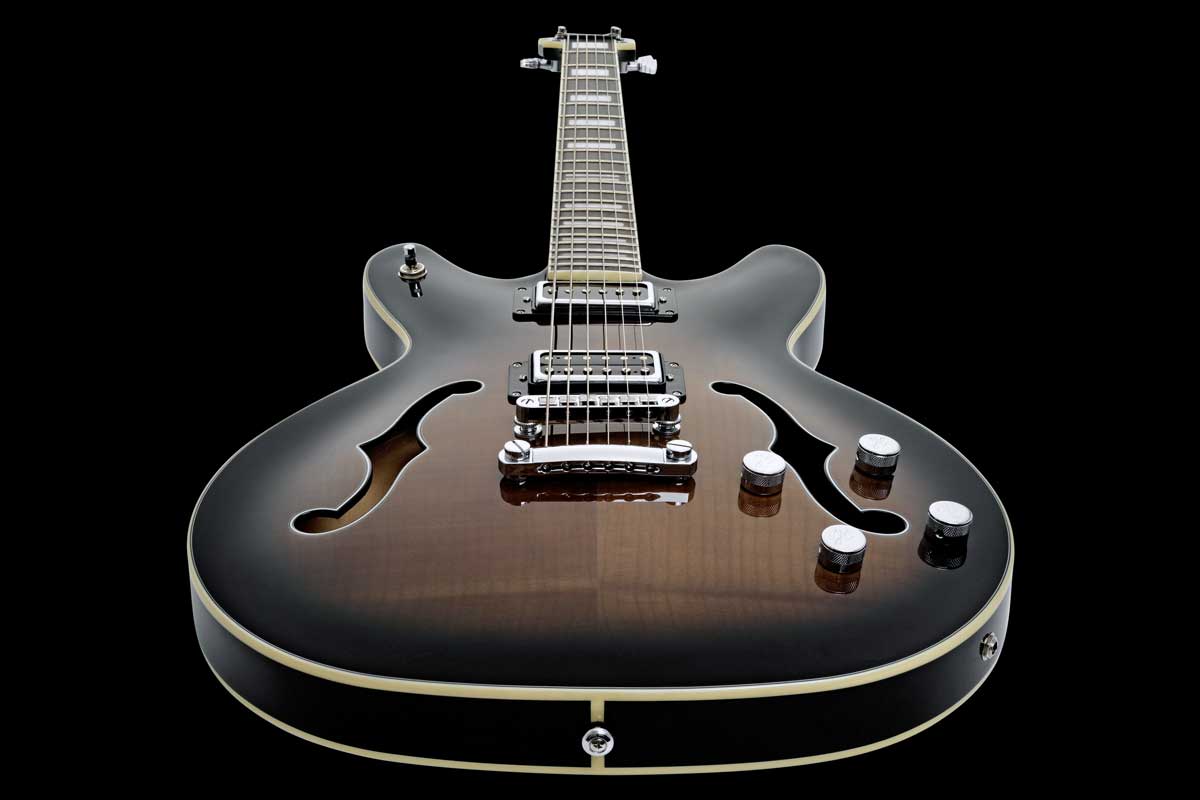
What Is A Baritone Guitar
Baritone guitars are a unique type of stringed instrument, offering a distinctive sound when compared to standard guitars.
Baritone guitar scale length is typically between 27 and 30.5 inches, making these guitars more suitable for lower tunings, & delivering a rich, deep sound.
While acoustic baritone guitars have been around for many years, they have always been more of a niche instrument. In modern times however, we have seen a rise in popularity of the electric baritone guitar, especially with heavier music because of their powerful sound & ability to handle dropped tunings.
When you play a baritone guitar, you’ll notice that the string tension is higher due to the increased scale length. This characteristic enables the guitar to accommodate lower tunings without losing clarity or sustain.
Typically, baritone guitars are tuned a perfect fourth or fifth lower than a standard 6 string guitar, with the most common tuning being:
B-E-A-D-F#-B (B Standard Tuning)
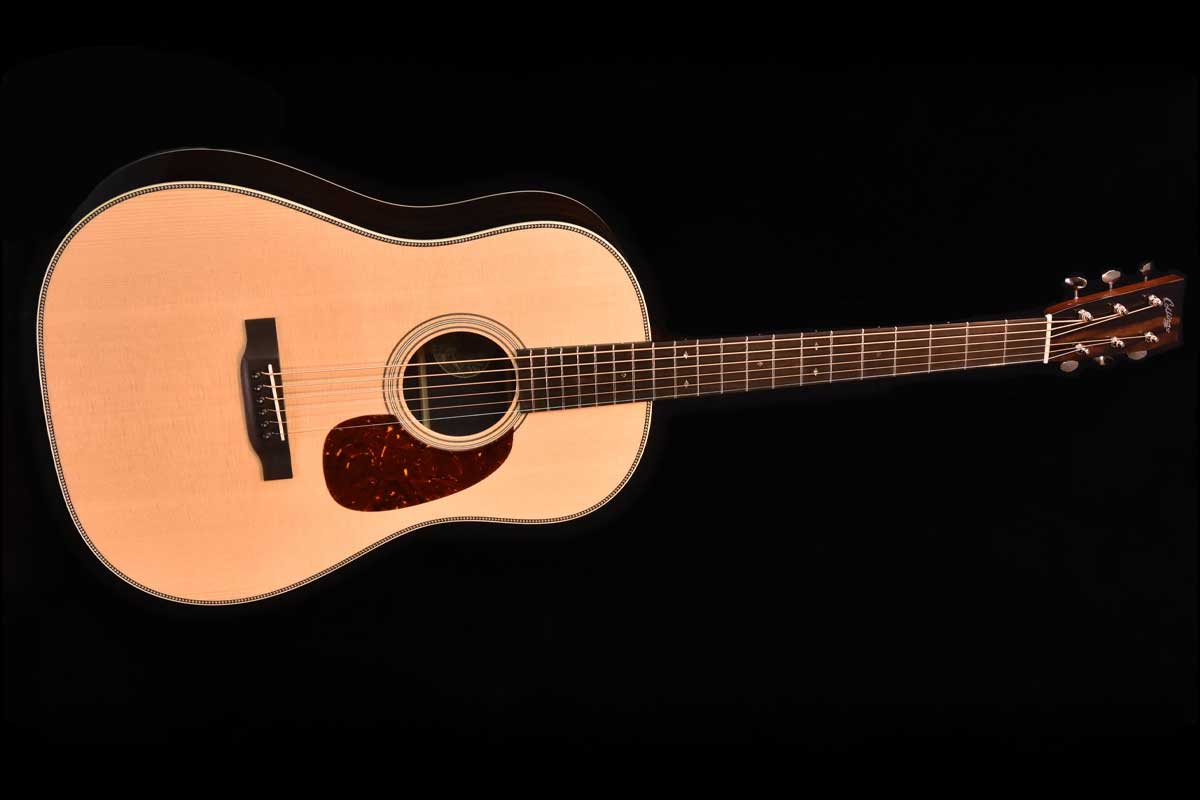
Types of Baritone Guitars
Various types of baritone guitars exist, with an electric baritone guitar being a popular choice for guitarists seeking extended range and versatility. These instruments are particularly well-suited for styles such as heavy metal, progressive rock, and experimental music, where a broader range of frequencies & harmonic complexity is desired.
On the other hand, an acoustic baritone guitar brings a different dimension to traditional folk and acoustic genres, offering a new tonality and expanded harmonic possibilities.
The resonant, deep sound of these guitars can evoke powerful emotions and create a dynamic contrast with other instruments.
It’s also worth noting that some manufacturers produce 8 string baritone guitars, further expanding the harmonic range of the instrument. These guitars typically feature an additional F# and B string above the standard six string, allowing for even greater chordal and melodic flexibility, as well as more alternative tunings.
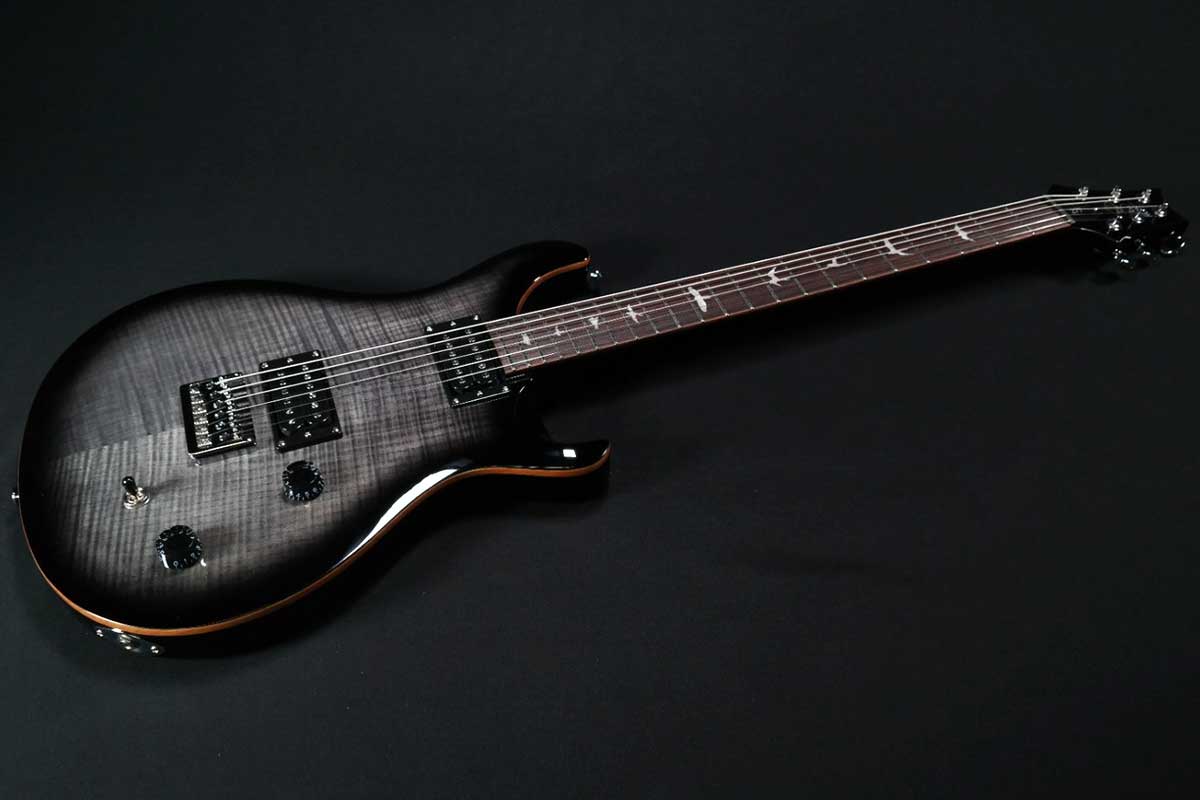
History of Baritone Guitars
Baritone guitars have played a significant role in shaping modern music since their introduction in the late 1950s . They offer a unique sound, falling between a regular guitar and a bass guitar. This distinctive tonality is achieved by having a extended-scale length and lower tuning.
One of the pioneers of the baritone guitar is Duane Eddy, who helped popularize its characteristic sound with his classic, twangy instrumental hits in the late 1950s. His influence extended to bands like The Beach Boys and their legendary producer, Brian Wilson.
In the 1960s, Danelectro became a major player in the baritone guitar market, producing affordable instruments that would be used by icons such as Glen Campbell and Brian Wilson on their groundbreaking recordings. The Beach Boys’ album “Pet Sounds” is a brilliant example of the versatility and unique timbre that a baritone guitar can bring to a composition.
The baritone guitar continued to evolve and gain popularity as various musicians added their own unique touch to the instrument’s potential. In the 1980s and 1990s, the baritone found its place in the arsenal of progressive rock and metal guitarists like John Petrucci of Dream Theater and James Hetfield of Metallica. Eddie Van Halen and Dave Matthews have also incorporated the baritone guitar into their playing, further proof of the instrument’s adaptability and allure.
Overall, the history of the baritone guitar is rich with talented musicians and iconic moments, demonstrating the instrument’s importance in shaping the evolution of music.
How To Tune A Baritone Guitar ( B Standard Tuning)
Tuning a baritone guitar is quite similar to tuning a standard guitar, but with some differences in pitch. You can use the following reference pitches to tune your baritone guitar to standard B to B tuning:
Baritone Guitar Tuning List
B Standard Tuning (B to B):
This is the most common tuning for baritone guitars.
The guitar strings are tuned from low to high: B, E, A, D, F#, B
It provides a deep and resonant tone, making it ideal for various musical genres.
C Standard Tuning (C to C):
In this tuning, the strings are tuned from low to high: C, F, B♭, E♭, G, C
It offers a slightly brighter and less bass-heavy sound compared to standard baritone tuning.
Drop A Tuning:
This tuning is commonly used in heavy metal and hard rock & is a very similar configuration to the ever-popular Drop D tuning on a regular guitar .
The strings are tuned from low to high: A, E, A, D, F#, B
It provides a powerful & aggressive tone, with easy access to power chords which perfect for heavy riffing.
Celtic Tuning
This is a baritone-equivalent of the traditional DADGAD tuning which is commonly used in Celtic & Folk music.
The strings are tuned from low to high: A, E, A, D, E, A
It produces a rich sound when the open strings are strummed and allows for some unique chord voicings.
Drop G Tuning
Drop G tuning is another heavy-hitter that’s popular with alternative, metal, and Djent styles of music.
The strings for this are tuned to: G, D, G, C, E, A
Much like Drop D or Drop A as shown above, this tuning allows for thunderous power chords by using a single finger.
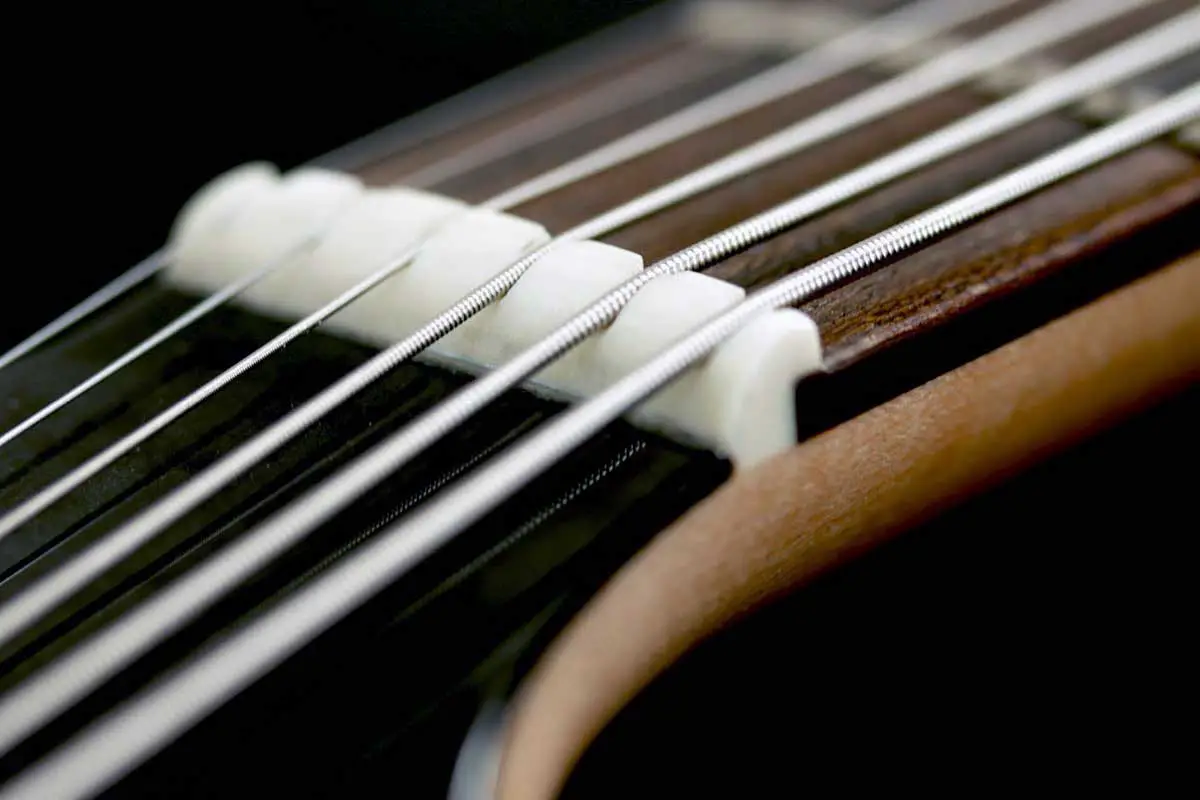
Considerations for Selecting Baritone Strings
When selecting strings for a baritone guitar, gauge and material are paramount. The extended scale length of the baritone necessitates heavier gauges, typically in the range of 11-68 to 12-70, to ensure proper tension and tuning stability for lower registers.
Material choice directly influences tone: nickel-plated strings yield a warm balance, stainless steel provides crisp brightness, and phosphor bronze delivers a softer, mellower quality.
Additionally, winding type affects playability and sound. Roundwound strings are standard, offering a bright tone and textured feel, while flatwound strings are smoother and more subdued, preferred for jazz or intricate fingerstyle.
When considering tuning, verify that the strings can withstand your chosen tuning, such as B to B or lower, without sacrificing tone or tension.
String selection is ultimately a personal decision, guided by the demands of your playing style and the sound you aim to achieve, so experimentation with various gauges, materials, and windings is encouraged to find the ideal match for your baritone guitar.
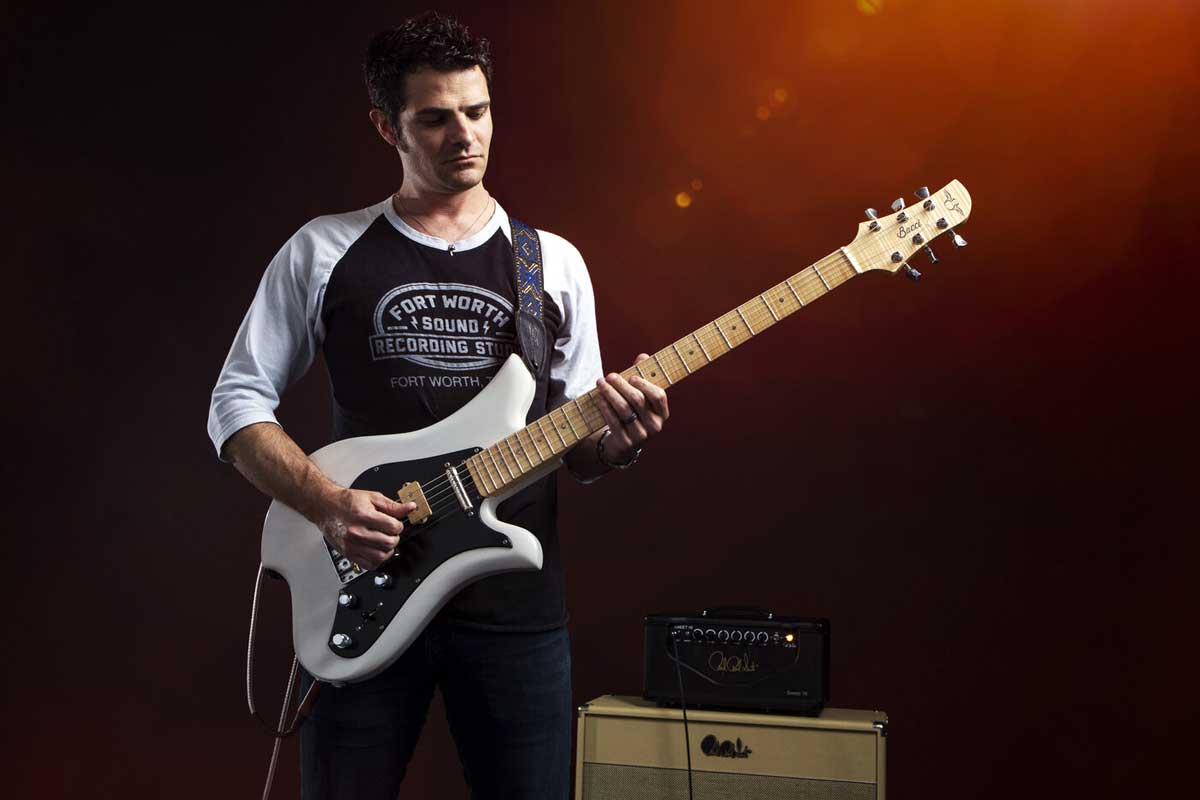
Famous Baritone Guitar Musicians
The baritone guitar, with its extended range and rich timbre, bridges the gap between a standard guitar and a bass, offering a unique sound that has captivated musicians and audiences alike.
It provides a distinctive voice that has been integral in shaping the soundscapes of various musical styles, from the melancholic melodies of pop to the aggressive riffs of metal. Its ability to add depth and character to music has made it a valued instrument among many influential artists.
Here’s an expanded table with additional context on how each artist has utilized the baritone guitar in their music:
| Musician | Genre | Notable Use of Baritone Guitar |
|---|---|---|
| Robert Smith | Goth Rock | The Cure’s frontman uses the baritone’s full tone for atmospheric layers and emotional depth in the band’s sound. |
| Ani DiFranco | Singer-songwriter | DiFranco employs the baritone to complement her dynamic vocal range and rhythmic playing style. |
| The Ventures | Surf Rock | The band used the Fender Bass VI to create the deep, reverberating melodies characteristic of surf music. |
| The Shadows | Surf Rock | Pioneers of the surf sound, they also utilized the Fender Bass VI to produce their iconic instrumental hits. |
| Mark Lettieri | Funk | The Snarky Puppy guitarist uses the baritone’s extended range for funky grooves and experimental sounds. |
| Pat Smear | Rock/Punk | With Foo Fighters, Smear has used the baritone guitar’s lower register to add a heavier edge to the band’s anthemic rock. |
| Ian MacKaye | Punk | MacKaye has incorporated the baritone’s distinct sound to broaden the sonic palette of Fugazi’s punk ethos. |
| Machine Head | Heavy Metal | The band integrates baritone guitars for their downtuned, heavy riffs that define their metal sound. |
| Korn | Nu Metal | Known for their down-tuned, rhythmic textures, Korn uses baritone guitars to achieve their signature sonic heaviness. |
| James Hetfield | Heavy Metal | Metallica’s rhythm guitarist has occasionally turned to the baritone guitar for a deeper, more resonant metal tone in certain songs. |

Frequently Asked Questions
What are the common tuning notes for a baritone electric guitar?
The common tuning notes for a baritone guitar are B-E-A-D-F♯-B, which is a perfect fourth lower than the standard guitar tuning. This tuning provides a deeper and richer tone, allowing the baritone guitar to cover a wider range of musical styles. Some guitar players also experiment with other tunings, such as C-to-C and A-to-A.
How do I tune a 6-string baritone guitar?
To tune a 6-string baritone guitar, simply follow the standard procedure of tuning any guitar. Adjust the tuning pegs for each string until the notes match the baritone guitar’s tuning (B-E-A-D-F♯-B). It’s recommended to use an electronic tuner or a tuning app to ensure accuracy.
Can I tune my baritone guitar to B-to-B?
Yes, you can tune your baritone guitar to B-to-B, which is the most common and recommended tuning for a baritone guitar. This tuning extends the range of the instrument, providing a deep and resonant sound that works well with various musical styles.
Is there a recommended tuner app for baritone guitars?
While there isn’t a specific tuner app designed exclusively for baritone guitars, most widely used guitar tuning apps and electronic tuners can accommodate the baritone tuning. Some popular tuner apps include Guitar Tuna, Fender Tune, and Pano Tuner. Make sure to set the app to the correct baritone tuning before beginning.
How do chords differ on a baritone electric guitar?
Chords on a baritone guitar are played using the same finger positions as on a standard guitar, but due to the altered tuning, the chord shapes produce different chords. For example, playing an open E chord shape on a baritone guitar will create a C or B chord, depending on the tuning. It is important to familiarize yourself with the chord transpositions when playing a baritone guitar.
Are all 7-string guitars considered baritone?
No, not all 7-string guitars are considered baritone guitars. While a 7-string guitar has an extended range compared to a standard 6-string guitar, it doesn’t necessarily have the same tuning as a baritone guitar. However, some musicians opt to use a 7-string guitar as a baritone by tuning the additional low string to a lower note. It’s essential to consider the instrument’s specifications and intended purpose when deciding whether or not to use a 7-string guitar as a baritone.
